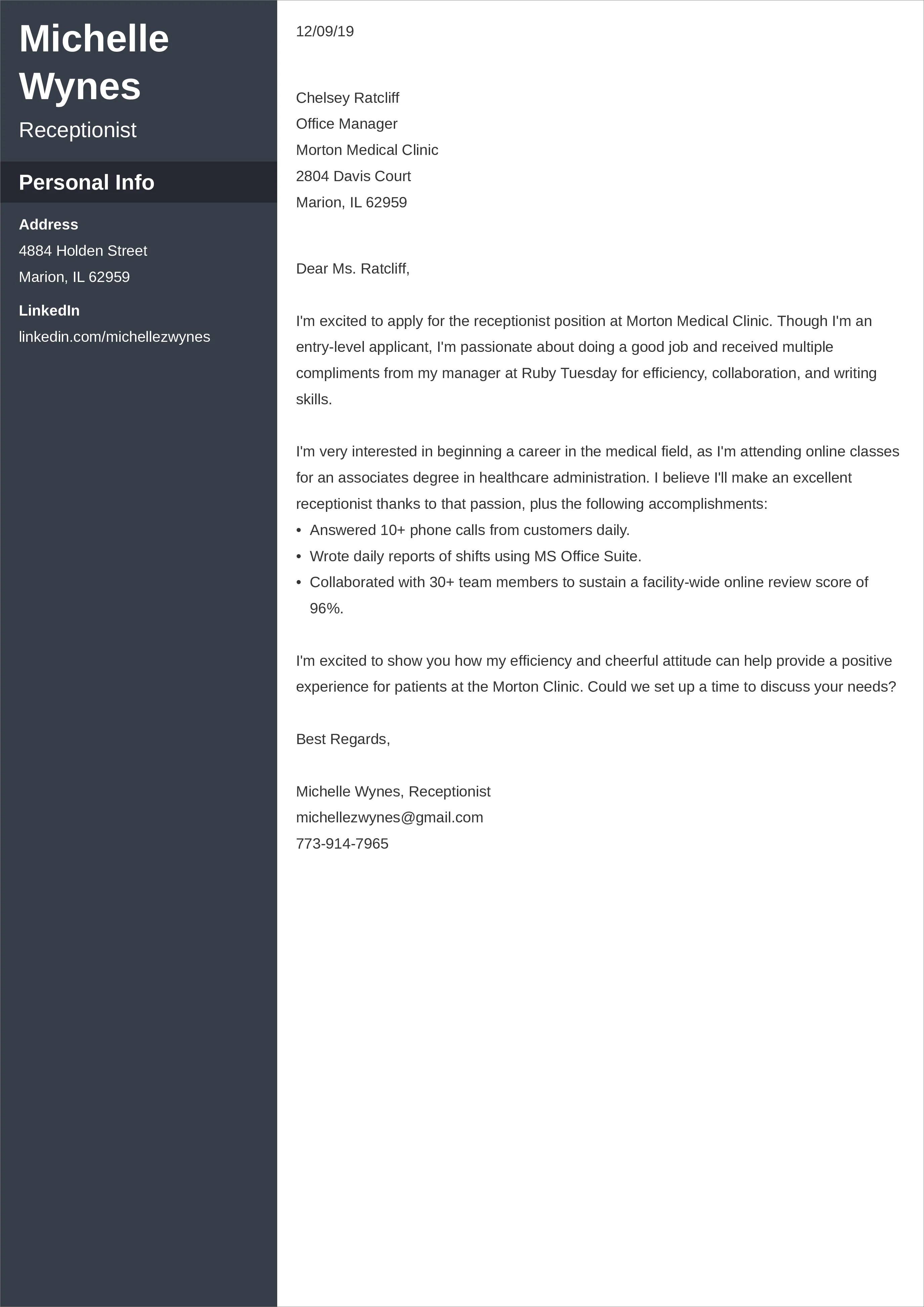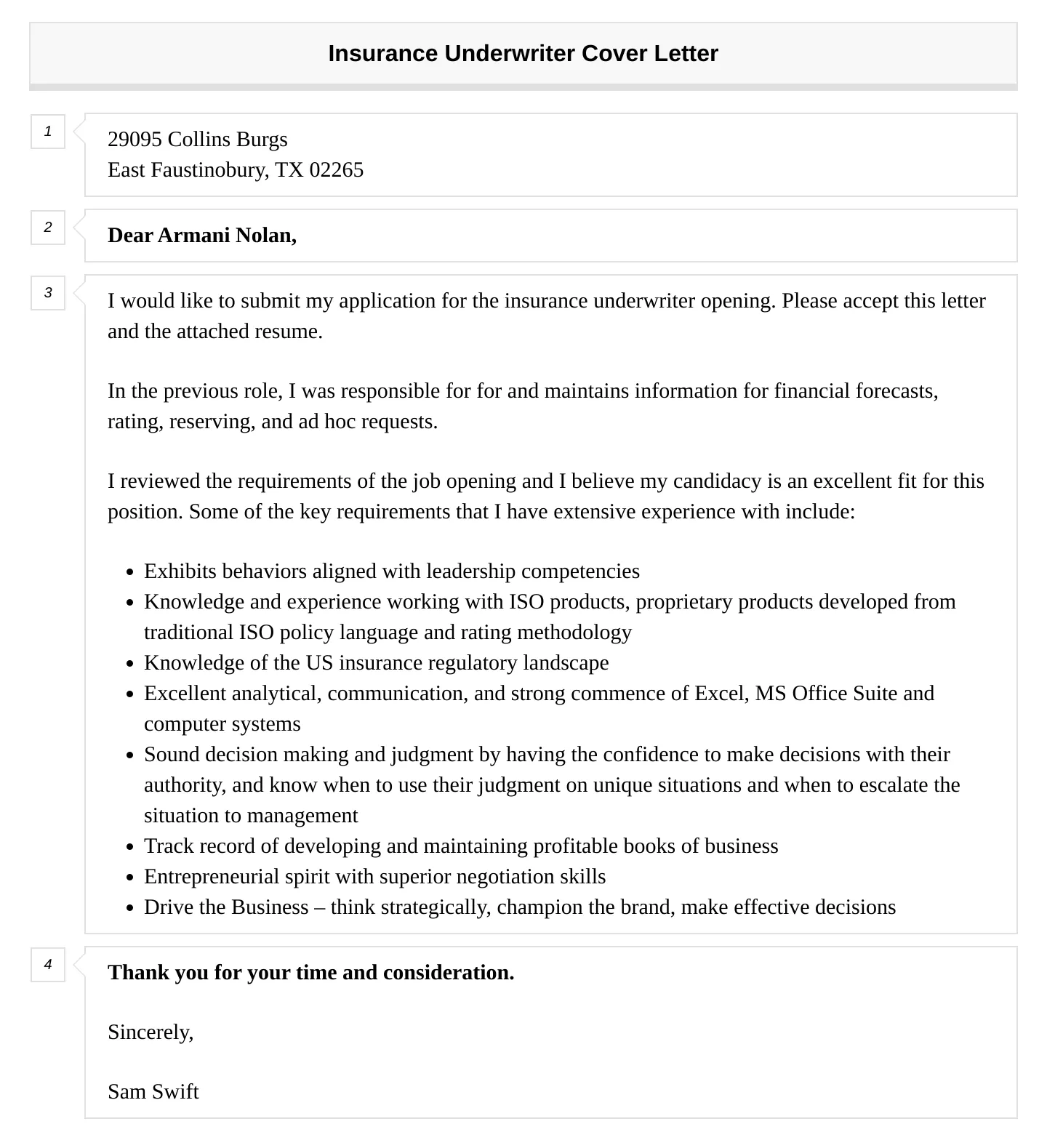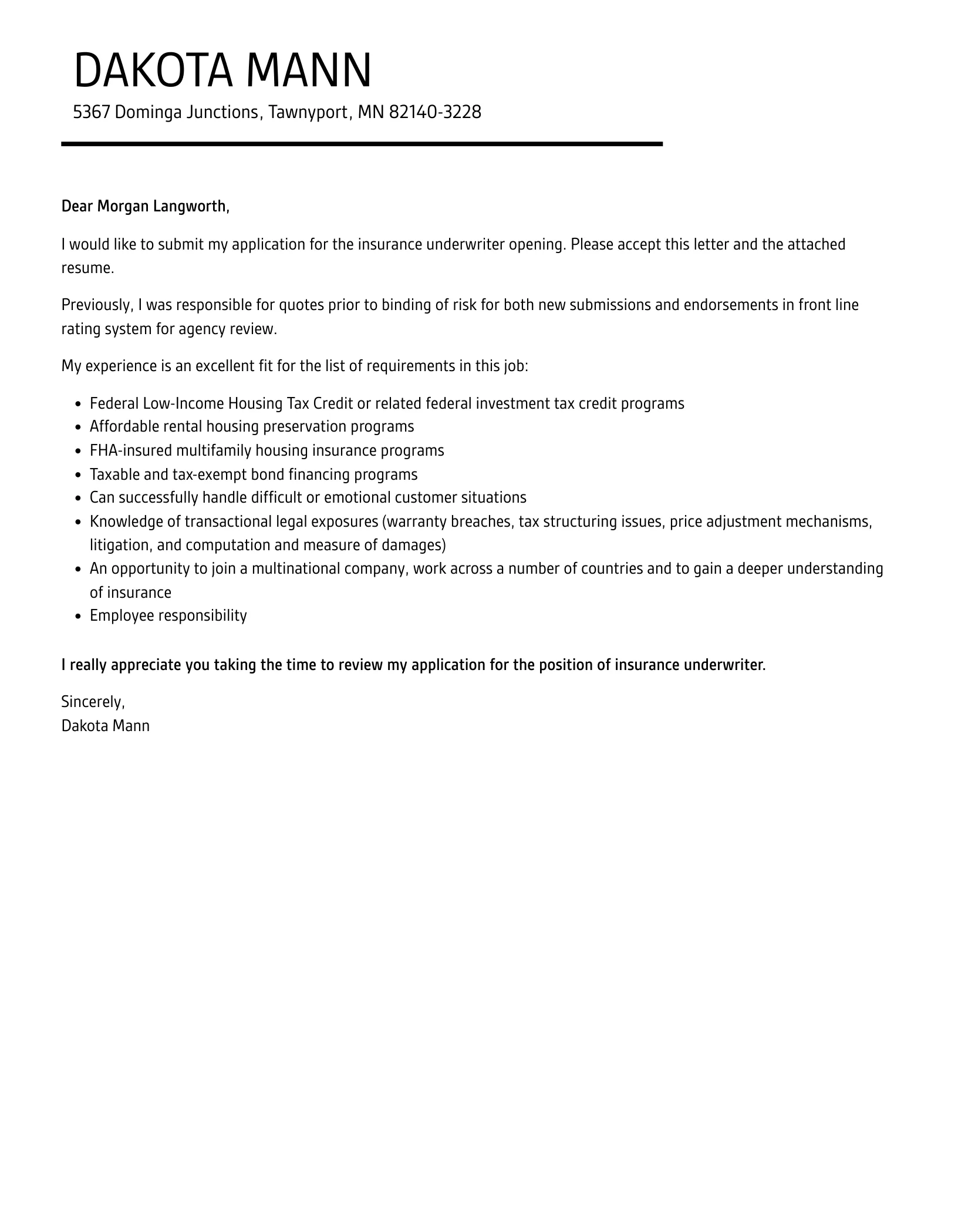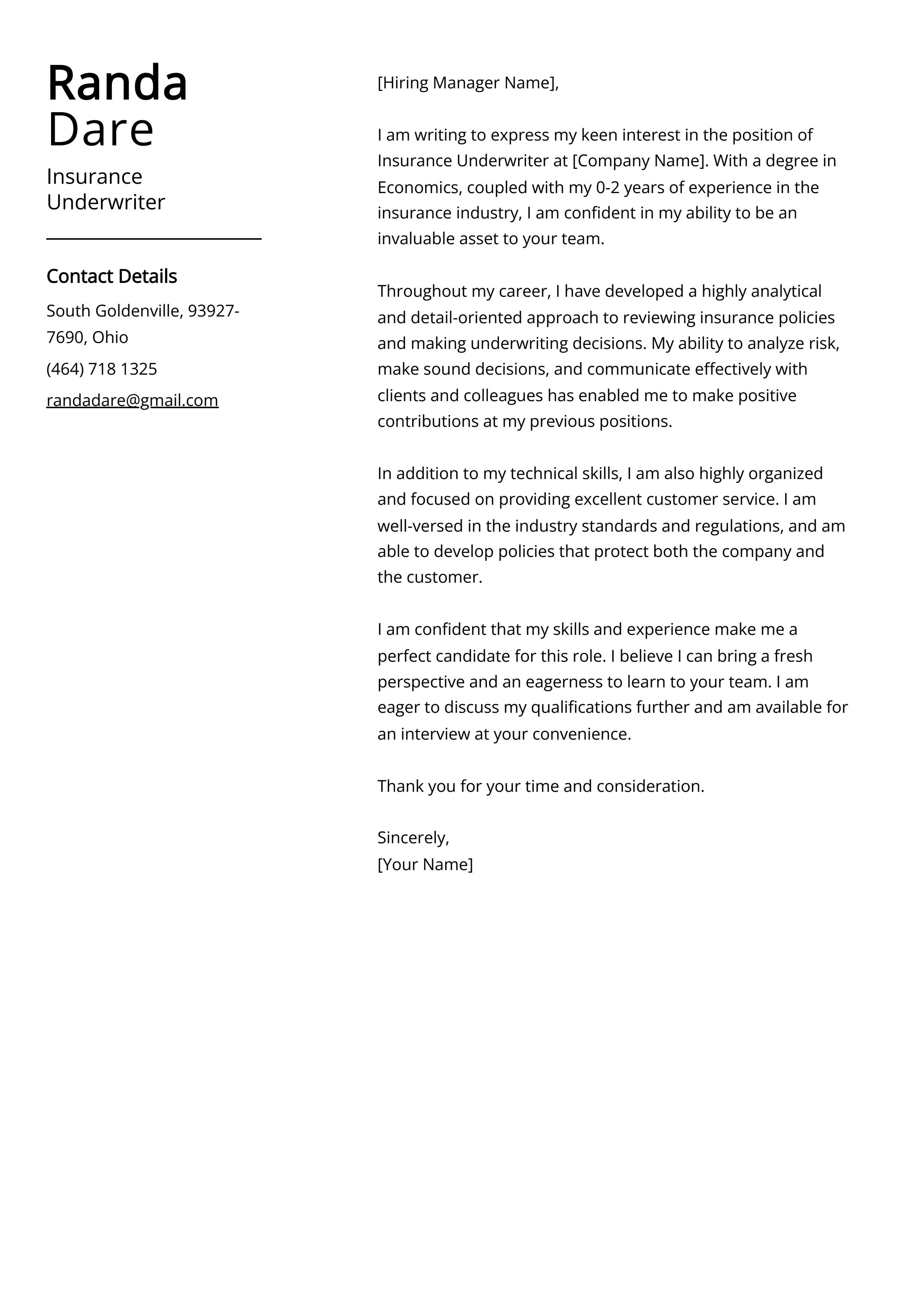Crafting Your Underwriter Cover Letter
A compelling cover letter is your first step toward landing an insurance underwriter position, even with no prior experience. This document is your chance to make a strong first impression and demonstrate your potential to employers. It’s more than just a formality; it’s a carefully constructed narrative showcasing your skills, enthusiasm, and understanding of the industry. Begin by thoroughly researching the role and the company. Understand the key responsibilities and the qualities they seek in candidates. This preparation allows you to tailor your letter specifically to each opportunity, increasing its impact. Next, structure your letter logically, presenting information in a way that is easy to read and follow. A well-organized letter shows attention to detail and professionalism, both crucial traits for an underwriter.
Highlighting Transferable Skills
When you lack direct experience as an underwriter, focusing on transferable skills becomes vital. These are the skills you’ve developed in previous roles, education, or volunteer work that are relevant to underwriting. Identify skills such as analytical thinking, problem-solving, attention to detail, and communication. For instance, if you have a background in customer service, you can highlight your ability to assess situations, make informed decisions, and interact effectively with clients. If your experience includes data entry or analysis, emphasize your proficiency in handling large amounts of information accurately. The goal is to connect your past experiences to the requirements of an underwriter role, showing how you can bring value to the company. Remember to use concrete examples to illustrate these skills, making your claims more credible and persuasive.
Skills to Showcase

Underwriting demands a unique blend of skills. While you might not have direct underwriting experience, you can emphasize your abilities in areas crucial for success. Analytical skills are paramount as underwriters analyze data to assess risk. Showcase your ability to interpret complex information, identify patterns, and make logical judgments. Attention to detail is critical; underwriters must meticulously review applications and documents to ensure accuracy. Highlight your experience with detailed tasks, projects, or assignments where precision was essential. Problem-solving skills are also valuable. Underwriters often face complex cases, and you must demonstrate your ability to think critically, assess situations, and devise effective solutions. Lastly, emphasize your communication skills, as underwriters need to interact with various stakeholders, including clients, brokers, and colleagues. Tailor your examples to show how you’ve applied these skills in the past and how they align with the needs of an underwriter role. This targeted approach helps you stand out as a strong candidate.
Quantifiable Achievements
Even without underwriting experience, you can quantify your achievements in previous roles. Use numbers and metrics to demonstrate your impact and provide concrete evidence of your abilities. For example, if you improved efficiency in a data-entry position, state the percentage increase in accuracy or the number of records processed per hour. If you were involved in a customer service role, quantify your success by mentioning the percentage of positive customer feedback or the reduction in customer complaints. These figures provide concrete evidence of your skills and accomplishments, making a compelling case for your candidacy. Whenever possible, relate your achievements to the requirements of an underwriter role. For instance, if you have experience analyzing data to identify trends, provide specific examples of how you used those skills to achieve positive outcomes. This approach demonstrates your potential to bring value to the company and perform well in the underwriting position.
Researching the Company
Before you begin writing your cover letter, dedicate time to thoroughly research the company. Understanding the company’s mission, values, and recent initiatives will allow you to customize your letter and show your genuine interest. Visit the company’s website, read its annual reports, and browse its social media profiles to gain insights into its culture and business strategy. This research will provide you with valuable information to tailor your letter and highlight your alignment with the company’s goals. Look for specific details, such as recent projects, awards, or community involvement, to demonstrate your understanding and enthusiasm. Mentioning these details in your cover letter shows that you have taken the time to learn about the company and are genuinely interested in the opportunity. This level of personalization sets you apart from other applicants and increases your chances of getting noticed.
Tailoring Your Cover Letter

A generic cover letter is unlikely to make a lasting impression. Tailor your cover letter to each specific job application, highlighting the skills and experiences most relevant to the role. Start by carefully reviewing the job description and identifying the key requirements and desired qualifications. Then, customize your letter to address these specific needs. Use the same keywords and phrases from the job description to demonstrate that you understand the role and possess the necessary skills. Provide concrete examples that showcase how your skills and experiences align with the requirements of the position. This demonstrates your ability to meet the company’s needs and increases your chances of getting an interview. Take the time to adjust your letter for each application. This extra effort shows your commitment and seriousness, making your application more effective.
Formatting Your Cover Letter for Success
A well-formatted cover letter is easy to read and professional in appearance. Ensure your letter is visually appealing and structured in a way that helps the reader quickly grasp the essential information. Choose a clean, easy-to-read font, such as Times New Roman or Arial, and maintain a consistent font size throughout the document. Use clear headings and subheadings to break up large blocks of text and guide the reader. Maintain consistent margins and spacing to ensure a professional look. Proofread carefully to eliminate any grammatical errors or typos, as these can detract from your credibility. A well-formatted cover letter shows attention to detail and professionalism. It also makes your letter more accessible and easier for the hiring manager to read and understand, increasing your chances of a positive first impression.
Header and Contact Information
Begin your cover letter with a professional header that includes your contact information. This section should be clear, accurate, and easy to find. Include your full name, address, phone number, and email address. Use a professional-sounding email address, and avoid using nicknames or informal language. Add the date and the hiring manager’s name and title, if you know it. If you can’t find a name, you can use a general salutation such as “Dear Hiring Manager.” This information allows the employer to quickly contact you. Double-check all the information for accuracy to ensure that the employer can reach you if they choose to contact you for an interview.
The Body Paragraphs

The body of your cover letter is where you make your case. Start with a strong opening that grabs the reader’s attention and expresses your interest in the position. Briefly explain why you are writing and how you learned about the opportunity. In the following paragraphs, highlight your relevant skills and experiences, focusing on transferable skills. Use specific examples to demonstrate your abilities and accomplishments. Show, don’t just tell. For each skill or experience you mention, provide concrete evidence of your proficiency. For example, instead of saying you are a good communicator, describe a situation where you successfully communicated complex information to a diverse audience. Use keywords from the job description and connect your skills to the role’s requirements. Conclude with a concise summary of your qualifications and a clear call to action, stating your interest in an interview and thanking the employer for their time.
The Closing and Call to Action
End your cover letter with a strong closing and a clear call to action. Reiterate your interest in the position and your confidence in your ability to contribute to the company. Include a brief summary of your most relevant qualifications, reinforcing why you are a good fit for the role. End your letter with a call to action, such as, “I am eager to discuss my qualifications further in an interview.” Express your gratitude for the hiring manager’s time and consideration. Use a professional closing, such as “Sincerely” or “Best regards,” followed by your typed name. Proofread your entire letter one last time to ensure there are no errors. A well-crafted closing reinforces your interest and encourages the hiring manager to take the next step, increasing your chances of securing an interview.
